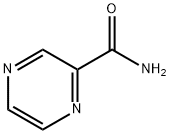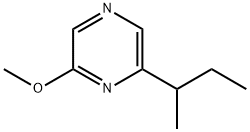2-Methoxypyrazine
- CAS NO.:3149-28-8
- Empirical Formula: C5H6N2O
- Molecular Weight: 110.11
- MDL number: MFCD00006126
- EINECS: 221-579-8
- SAFETY DATA SHEET (SDS)
- Update Date: 2024-12-18 14:08:52

What is 2-Methoxypyrazine?
Description
Methoxypyrazine has an odor threshold of 700 ppb in water. Methoxypyrazine may be prepared from 2-hydroxypyrazine by various routes.
Chemical properties
Colorless liquid
Chemical properties
Methoxypyrazine has a sweet, nutty, cocoa odor. Methoxypyrazine contributes a distinctive “green, capsicum (bell pepper), herbaceous and earthy” aroma that is quite characteristic of certain wines, such as sauvignon blanc and cabernet sauvignon.
Occurrence
Present at ultra-trace levels in sauvignon blanc and cabernet sauvignon grapes and wine. Methoxypyrazine contributes a distinctive wine aroma, even at low parts per trillion levels. Also reported found in cooked beef, cocoa, malt and krill.
Preparation
From 2-hydroxypyrazine by various routes.
Definition
ChEBI: Methoxypyrazine is an aromatic ether and a member of pyrazines.
Aroma threshold values
700 ppb in water
Safety Profile
Skin and eye irritant. When heated to decomposition it emits toxic fumes of NOx.
Properties of 2-Methoxypyrazine
| Boiling point: | 60-61 °C/29 mmHg (lit.) |
| Density | 1.14 g/mL at 25 °C (lit.) |
| refractive index | n |
| FEMA | 3302 | METHOXYPYRAZINE |
| Flash point: | 114 °F |
| storage temp. | Sealed in dry,Room Temperature |
| form | clear liquid |
| pka | 0.53±0.10(Predicted) |
| Specific Gravity | 1.140 |
| color | Colorless to Almost colorless |
| Odor | at 1.00 % in dipropylene glycol. sweet nutty cocoa |
| JECFA Number | 787 |
| BRN | 2241 |
| CAS DataBase Reference | 3149-28-8(CAS DataBase Reference) |
| NIST Chemistry Reference | Pyrazine, methoxy-(3149-28-8) |
| EPA Substance Registry System | Pyrazine, methoxy- (3149-28-8) |
Safety information for 2-Methoxypyrazine
| Signal word | Danger |
| Pictogram(s) |
 Flame Flammables GHS02  Corrosion Corrosives GHS05  Exclamation Mark Irritant GHS07 |
| GHS Hazard Statements |
H226:Flammable liquids H302:Acute toxicity,oral H315:Skin corrosion/irritation H318:Serious eye damage/eye irritation H335:Specific target organ toxicity, single exposure;Respiratory tract irritation |
| Precautionary Statement Codes |
P261:Avoid breathing dust/fume/gas/mist/vapours/spray. P280:Wear protective gloves/protective clothing/eye protection/face protection. P305+P351+P338:IF IN EYES: Rinse cautiously with water for several minutes. Remove contact lenses, if present and easy to do. Continuerinsing. |
Computed Descriptors for 2-Methoxypyrazine
New Products
Tert-butyl bis(2-chloroethyl)carbamate 4-Methylphenylacetic acid N-Boc-D-alaninol N-BOC-D/L-ALANINOL 3-Morpholino-1-(4-nitrophenyl)-5,6-dihydropyridin- 2(1H)-one Furan-2,5-Dicarboxylic Acid Tropic acid 1,1’-CARBONYLDIIMIDAZOLE DIETHYL AMINOMALONATE HYDROCHLORIDE R-2-BENZYLOXY PROPIONIC ACID 1,1’-CARBONYLDI (1,2-4 TRIAZOLE) N-METHYL INDAZOLE-3-CARBOXYLIC ACID (2-Hydroxyphenyl)acetonitrile 4-Bromopyrazole 5-BROMO-2CYANO PYRIDINE 5,6-Dimethoxyindanone 5-broMo-2-chloro-N-cyclopentylpyriMidin-4-aMine 2-(Cyanocyclohexyl)acetic acid 4-methoxy-3,5-dinitropyridine 2-aminopropyl benzoate hydrochloride 1-(4-(aminomethyl)benzyl)urea hydrochloride diethyl 2-(2-((tertbutoxycarbonyl)amino) ethyl)malonate tert-butyl 4- (ureidomethyl)benzylcarbamate Ethyl-2-chloro((4-methoxyphenyl)hydrazono)acetateRelated products of tetrahydrofuran








You may like
-
 3149-28-8 2-Methoxypyrazine 98%View Details
3149-28-8 2-Methoxypyrazine 98%View Details
3149-28-8 -
 2-Methoxypyrazine CAS 3149-28-8View Details
2-Methoxypyrazine CAS 3149-28-8View Details
3149-28-8 -
 1975-50-4 98%View Details
1975-50-4 98%View Details
1975-50-4 -
 2-HYDROXY BENZYL ALCOHOL 98%View Details
2-HYDROXY BENZYL ALCOHOL 98%View Details
90-01-7 -
 2-Chloro-1,3-Bis(Dimethylamino)Trimethinium Hexafluorophosphate 221615-75-4 98%View Details
2-Chloro-1,3-Bis(Dimethylamino)Trimethinium Hexafluorophosphate 221615-75-4 98%View Details
221615-75-4 -
 14714-50-2 (2-Hydroxyphenyl)acetonitrile 98+View Details
14714-50-2 (2-Hydroxyphenyl)acetonitrile 98+View Details
14714-50-2 -
 118753-70-1 98+View Details
118753-70-1 98+View Details
118753-70-1 -
 733039-20-8 5-broMo-2-chloro-N-cyclopentylpyriMidin-4-aMine 98+View Details
733039-20-8 5-broMo-2-chloro-N-cyclopentylpyriMidin-4-aMine 98+View Details
733039-20-8